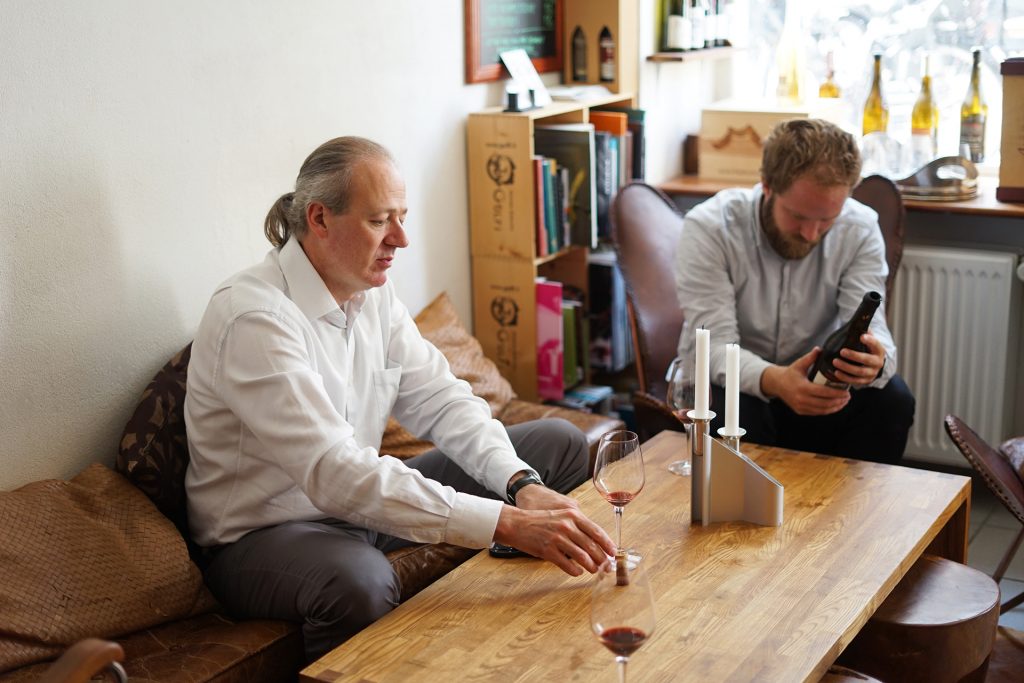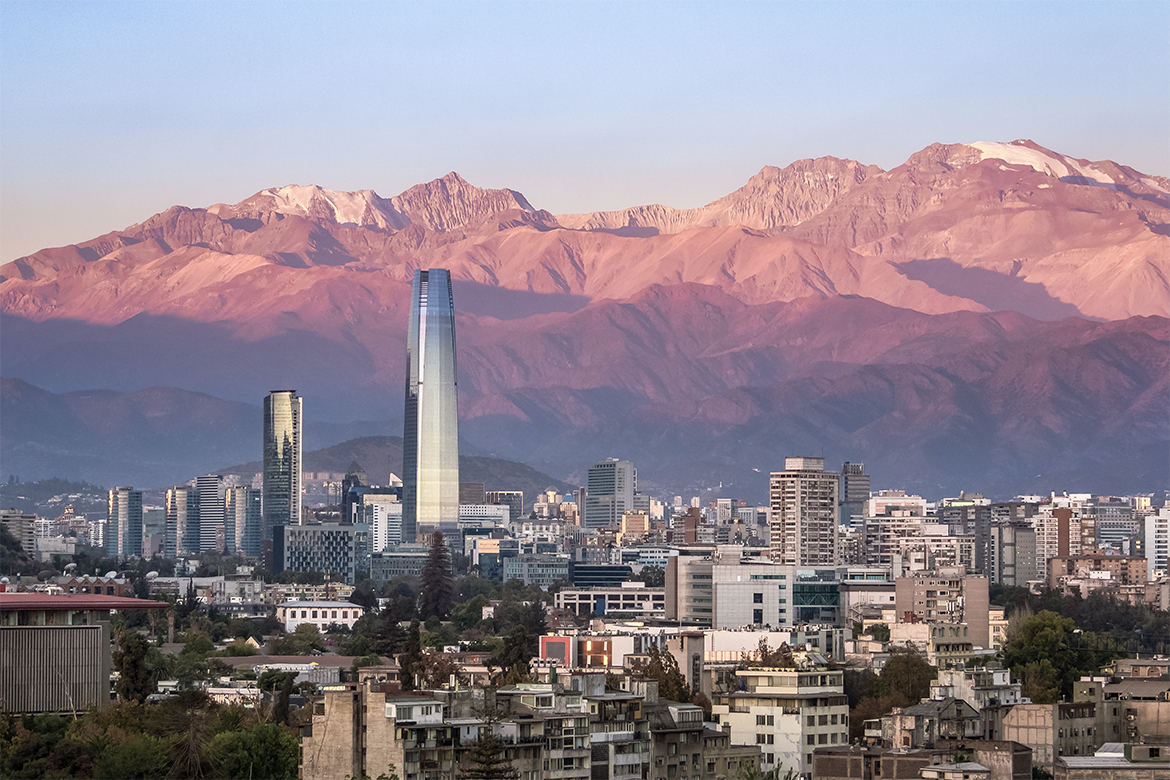
When you visit Nørrebro, one of Copenhagen’s most vibrant, young, and thriving neighborhoods, it’s hard to believe that this wasn’t always a place to go for a Sunday morning stroll or take your kids out for an ice cream on a warm summer evening. The neighborhood’s reputation for intense gang wars was once a constant factor. Today, however, Nørrebro is the new Vesterbro: hip, fashionable, and characterized by innovative entrepreneurship. While walking down Stefansgade on the way to Jægersborggade, there are trendy youths, families, and tourists alike sipping coffee on sidewalk tables and browsing in the various shops and galleries in the area.
Bikes are parked everywhere, so one must squeeze through them to reach the front door of Terroiristen, one of the city’s very first underground wine bars that serves only natural wine. Stefan Jensen opened Terroiristen back in 2008. Back then, he recalls, it was hard to attract people from other parts of Copenhagen: They didn’t feel safe coming there.

When asked about how he has experienced the evolution of people’s interest in natural wine, he says it’s difficult to distinguish customers’ interest in his shop from the gentrification happening in the area. Jægersborggade is quite the foodie street these days, and the word has spread. “Early on, our clientele was predominantly locals, whereas we see a lot of tourists and people from other neighborhoods today,” he says.
Jensen worked in IT before he decided to change his career path. Wine was a major hobby of his since his aunt introduced him to fermented grape juice at the age of 18. “I didn’t enjoy wine at that point,” he says. “Then I spent a week in my aunt’s summer house, where she served me a good glass of wine every night at dinner. That week turned my relationship with wine upside down.”

Instead of simply drinking and appreciating wine, he took his love for it to another level and started going on wine tours and tastings abroad. “When I first stumbled upon natural wine, nobody was using that term. It existed, but the modern natural wine movement that we see today was only really taking place in France at that point,” he adds.
“I was on a wine trip in Umbria, Italy, and was served this incredible wine in a restaurant,” he says. “It felt like one of those out-of-body experiences that would forever change my perception of wine.” The wine Jensen is referring to is from Umbria-based natural wine producer Paolo Bea, who has played a major role in establishing a prominent natural wine scene in Italy. Paolo Bea is still one of his all-time favorite wine makers to this day.

“Eventually I started importing natural wines,” says Jensen. “And then I reached a point where I kind of had to make a decision: Did I want to continue my job in IT, or was I going to devote my professional life to natural wine? I chose wine.” It’s hard to imagine Jensen working in IT. He looks excited and grateful when he tells his story. I can understand why.
Terroiristen is composed of two main rooms: the first one has round cafe tables, tall bar stools, and cozy window seats, while the other one is a smaller lounge-like space with rustic wooden furniture and comfy leather chairs. The wine list is just the bottles themselves with price tags aesthetically hanging from the bottlenecks. All wines are available by the glass, which makes for a wide and dynamic selection, always giving the customer the best possible base for exploring the many untamed flavors found in his wines.

When Jensen opened Terroiristen in 2008, it was nearly impossible to find natural wine in the city. Today you will typically find at least one or two natural wines on the menu at good restaurants. I ask him why he thinks Copenhagen has become such a destination for natural wine enthusiasts. “The natural wine scene in Copenhagen is booming due to a combination of circumstances. We already had a relatively developed wine culture here and saw great interest in wine before natural wine came along,” he says. “People were curious and open to try new things. Then came restaurants such as Tyven, Kokken, Hans Kone og Hendes Elsker, and Noma of course, which dared take a chance on natural wine. Finally, and largely inspired by Noma, came the organic movement and the widespread interest in food grown locally.”
Jensen takes great pride in being a forerunner in his field, hoping to persistently challenge and inspire people’s perception of natural wine. “Our role in the natural wine scene in Copenhagen is to broaden people’s horizons and constantly expose them to new natural wines,” he says. “Italy is the wine country I’m most familiar with, but at Terroiristen we specialize in wines from Eastern Europe: Slovenia, Hungary, Serbia. We started importing Slovenian natural wines back in 2005.”

As we reach the end of the interview, Mathias, who also works at the bar, joins us as Jensen opens up a bottle of 2006 Montebuono from Lombardy-based Barbacarlo. I don’t say much, I just observe how the facial expressions of the two change as they circulate the wine throughout their mouths, identifying its flavors. It’s barely midday, so I tell them I haven’t had wine so early in the day since I lived in Paris.
I ask them about the future of natural wine in Copenhagen. “We’ll see a more nuanced image of natural wine, and not just have people associate natural wine with fruity, sweet, and young wines,” says Jensen. “People are beginning to realize that natural wine can be older and more complex. And then, of course, we’re beginning to see less faulty natural wines, which is largely due to the young producers getting more experienced, as well as the natural wine importers, sommeliers, etc. getting more critical. I believe we’ll see the sharp division between conventional wine and natural wine soften up, so the best of the two worlds can finally meet.”
Monica Steffensen (@monicagrue) is a freelance journalist and photographer based in Copenhagen. This is Monica Steffenson’s first feature for Sprudge Wine.




